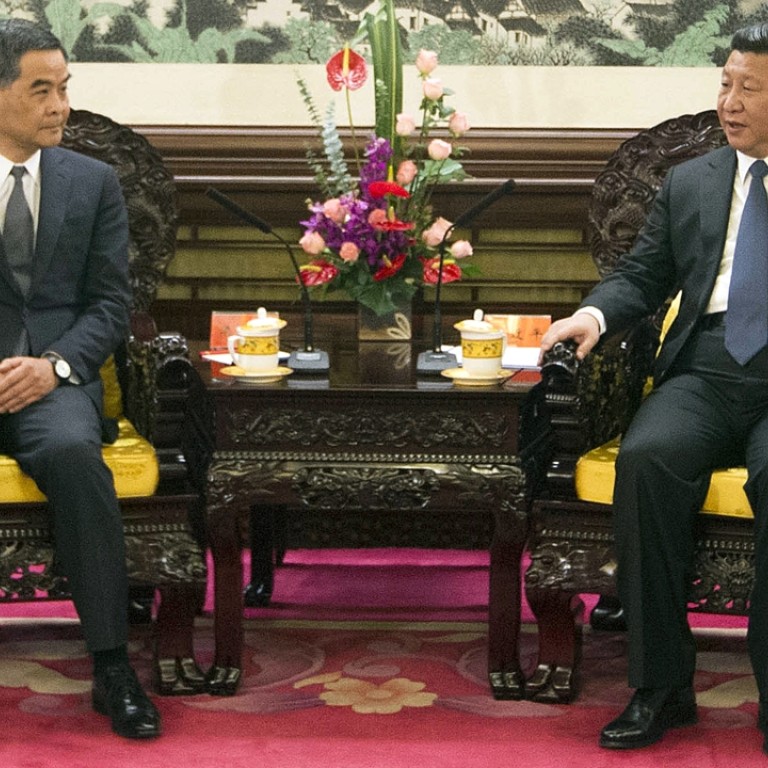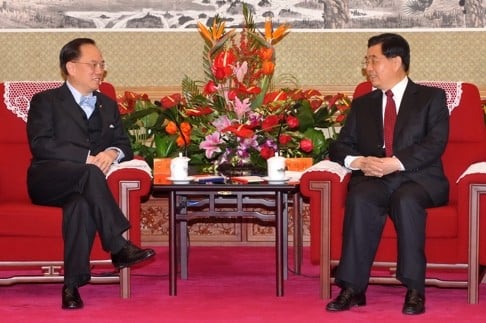
Xi shows who’s boss: Hong Kong’s Leung Chun-ying knocked off his perch to smaller seat
The method of delivery may have been oblique but the message was unequivocal.
Etiquette took centre stage yesterday when in a carefully calibrated act of political choreography, Beijing put the SAR firmly in its place.
The occasion was Chief Executive Leung Chun-ying’s annual duty visit to the capital , a path well trodden by his predecessors, Donald Tsang Yam-kuen and Tung Chee-hwa.

But in a move that reignited debate over the “one country, two systems” constitutional arrangement, Beijing chose who sat where, on what, and in which surroundings, to underline who is the boss.
At previous annual meetings, Hong Kong’s chief executive sat side-by-side with state leaders on identical grand chairs, an ornate table between them, much like the arrangement for overseas leaders visiting Beijing. But this time things were different.
READ MORE: Leung Chun-ying’s shift of power seats sparks debate on Hong Kong Chief Executive’s footing with Xi Jinping
While the setting remained grand, a notable change of seating positions was evident. In separate meetings with Leung, President Xi Jinping (習近平) and Premier Li Keqiang (李克強) sat at the head of a long conference table, with the chief executive perched on a smaller seat down the table to the right of the host leader.

The only apparent nod to Hong Kong’s special status as one of China’s two Special Administrative Regions – the other being Macau – were the comparatively opulent surroundings to those afforded to other provincial chiefs when they meet state leaders.
A spokesman for the State Council’s Hong Kong and Macau Affairs Office said the arrangement better reflected the constitutional requirement for the chief executive to be accountable to the central authorities and was “more regulated and solemn”.
Veteran China-watcher Johnny Lau Yui-siu said apart from the obvious message about who was in charge, the fact that other senior officials like Zhang Dejiang (張德江) and Li Yuanchao (李源潮) were there, “showed that the meeting was not a courtesy call – they were there to discuss business”.
Such nuanced yet powerful unspoken niceties are no stranger to corridors of Chinese power politics.
Last month when Xi and Taiwanese leader Ma Ying-jeou held their historic meeting in Singapore, tremendous time and effort – down to the duration of their handshake – were taken to make sure the right messages were delivered.


